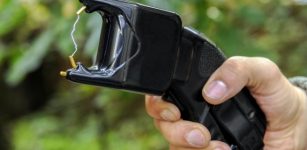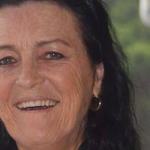Illegal Use of Tasers and Police Cover-Ups – the Bugmy Case

The case of Phillip Charles Bugmy was one of several incidents leading to a review by the NSW Ombudman into the use of tasers by police.
It preceded the highly publicised case of Brazilian student Roberto Laudisio Curti, who died after being tasered several times in the Sydney CBD, when he ran from police who suspected him of stealing biscuits from a convenience store.
The Ombudsman’s report was highly critical of the overuse of tasers, calling for a review of police policies and procedures.
The Case of Bugmy
Police were called to the home of Mr Bugmy’s grandmother – where Bugmy was residing – on an afternoon in 2011 in response to an alleged domestic violence incident.
When they arrived, Bugmy was eating dinner and – as he was holding a knife – was told he would be charged with possessing an offensive weapon.
Police then ordered Bugmy to lie on the ground. Instead, he took his shirt off, got on both knees and put both hands behind his head in a submissive manner. He was clearly unarmed and not aggressive at any time.
Despite his passivity, police kept directing him to lie on the ground, and then repeatedly tasered him, causing burns to several parts of his body.
Mr Bugmy was charged with resisting arrest, intimidating police and using an offensive weapon with intent to prevent lawful apprehension.
Here is the footage:
Internal Review
Despite the damning footage, the Police Service’s Regional Taser Review Panel cleared their colleagues of all wrongdoing, and no critical incident investigation was launched.
The Panel found that the injuries inflicted upon Mr Bugmy were “not serious enough” to warrant disciplinary action.
Court Proceedings
The matter ultimately proceeded to a hearing in Broken Hill Local Court in February 2012 – 7 months after Bugmy was arrested and placed behind bars.
At the hearing, Magistrate Geoff Dunlevy was highly critical of attending police, saying a “reasonable officer” would not have used a taser and that police allowed “a battle of wills to descend to violence” which had a “painful and debilitating” result for Mr Bugmy.
He accepted submissions by Mr Bugmy’s defence lawyer that the actions of police amounted to excessive force and a potential criminal assault.
He ultimately acquitted Mr Bugmy of all charges.
Despite the Court’s findings, police again refused to take disciplinary action against offending police, let alone press charges.
Taser Misuse
In his 2012 report, the Ombudsman identified 80 incidents between 2008 and 2011 where the use of tasers was unwarranted.
He found that 27 of those incidents involved the use of tasers in the more dangerous “probe” or “drive-stun mode”, when they should not have been.
He made several recommendations for reform.
Police Taser Policies
The policies for taser use are now contained in a document titled ‘Use of Conducted Electrical Weapons (Taser)’, published on 1 July 2016 with a review date set on 1 July 2018.
The document confirms previous policy that police should attempt, where possible, to de-escalate situations and negotiate before considering the use of tasers. It recognises the dangers of tasers, especially when they are used in probe and drive-stun modes.
It says tasers should only be used:
- To protect human life;
- To protect police or others where violent confrontation is occurring or imminent;
- To protect police or others where violent resistance is occurring or imminent;
- To protect police where there is an imminent danger of being overpowered;
- To protect police or other from the risk of actual bodily harm; or
- To protect police from attacks by aggressive animals.
It is hoped the document will lead to an understanding that tasers can be extremely dangerous, and should only be used if necessary.
Exposing Police Brutality
The Bugmy incident is notable for giving rise to an application by the ABC to publish the footage of Mr Bugmy being tasered.
Police opposed that application on the basis that releasing the footage could harm relations between police and the community, thereby increasing the risk of assaults upon police officers.
In assessing the application, the court noted there is a presumption in favour of releasing such footage, and cited the judgment of Spigelman CJ in John Fairfax Publications Pty Ltd v District Court of NSW, which remarked:
“The principle of open justice is one of the most fundamental aspects of the system of justice in Australia… [and] Nothing should be done to discourage fair and accurate reporting of proceedings.”
The Magistrate recognised the competing considerations:
“Whilst I accept that the broadcasting of the footage may cause some disquiet within certain portions of the community it may also be a catalyst for discussion on issues of public interest.”
He ultimately granted the application, noting that the principles of “open justice” and presumption in favour of publication “… should be departed from only on the rarest of occasions.”
Receive all of our articles weekly
Author






